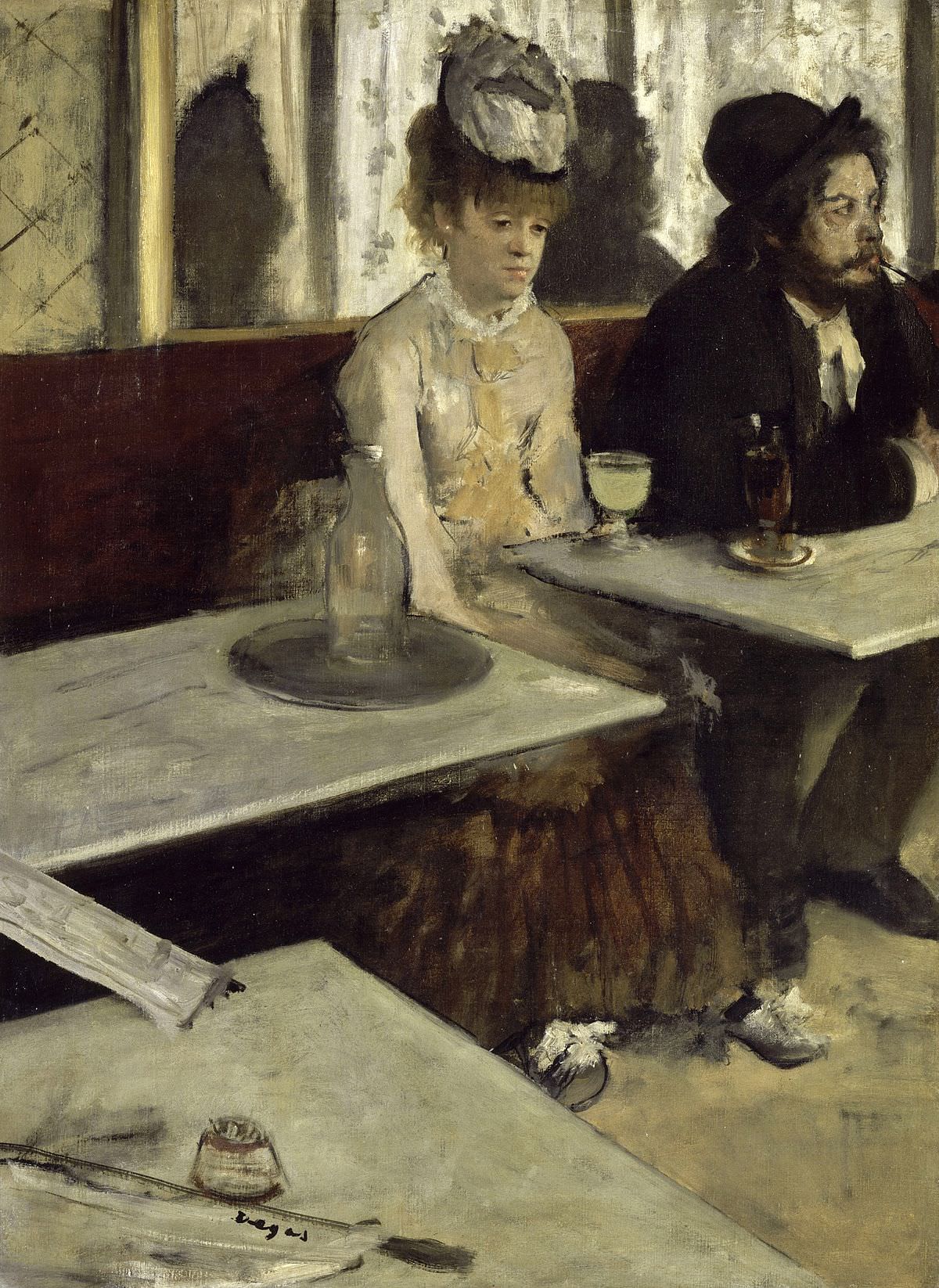L'Absinthe by Edgar Degas
The two figures in this work were modeled on members of the Impressionist circle - the artist Marcellin Desboutin, and the actress and
model, Ellen Andree - and are shown at the Nouvelle-Athens Cafe, a favorite meeting place at this time. Desboutin was painted by Manet in 1875
and Andree appears in works by both Renoir and Manet. Degas did not finish the work in time for the Second Impressionist Exhibition of 1876, but
it appeared at the Third of 1877. Despite its realistic basis, the scene cannot be seen as merely a slice of Impressionist life. It attracted
considerable criticism when it was exhibited, especially on its display in London in 1893. On this occasion the conservative English artist
Walter Crane claimed it to be 'a study of human degradation, male and female'. What many saw was a depiction of alcoholism, which became a public
issue in France during the Second Empire. Right wing politicians had exploited it as a means of explaining away broader social and economic
difficulties, while a growing temperance movement had also emerged. Further evidence of public sensitivity to the subject is indicated by the
fact that Manet's much earlier picture of an absinth drinker (1859) was refused by the Salon for its uncompromising naturalism.
Absinth (identified as Andree's drink by its colour and the presence of a carafe of water) was the most popular of spirits in France at this
time. With the increasing demand for it there arose an almost mythical notion of its addictive, debilitating effects, which are suggested
here by the slouching pose and vacant, lifeless expression of the woman. The full shadows behind the figures and the grey palette furthermore
indicate that the scene is set in the morning. Typical of Degas' treatment of the subject is his detachment and the way in which the viewer
is made to feel uncomfortably close to the figures: the viewpoint seems to be from the adjoining table. The large expanses of bare table top draw
the eye swiftly from the cursorily sketched newspapers in the foreground towards the main subject. The artist's objective, pitiless gaze is
echoed by the psychological distance between the two figures: no clues are given as to whether there is any relationship between them or whether
they are merely seated together.
